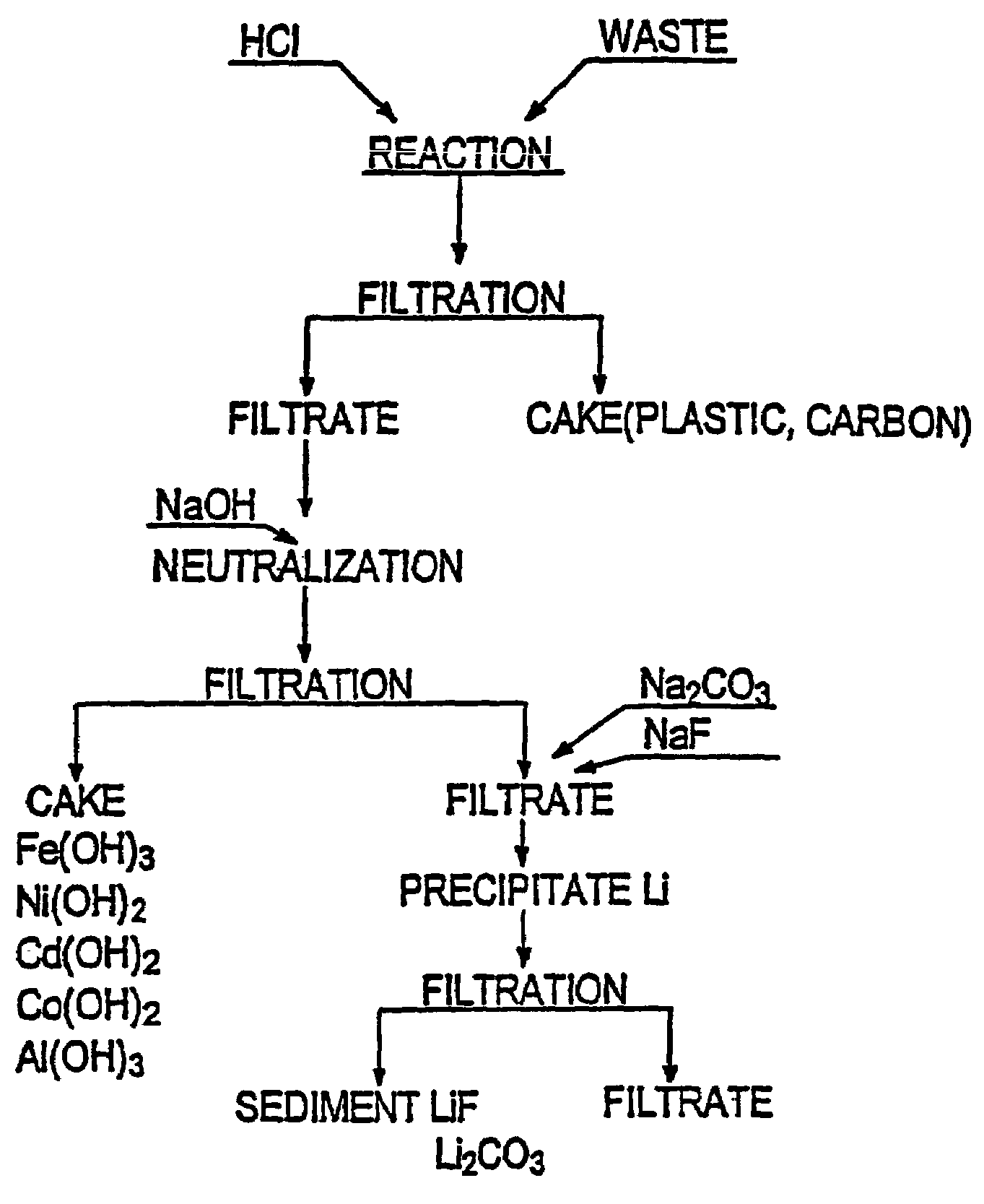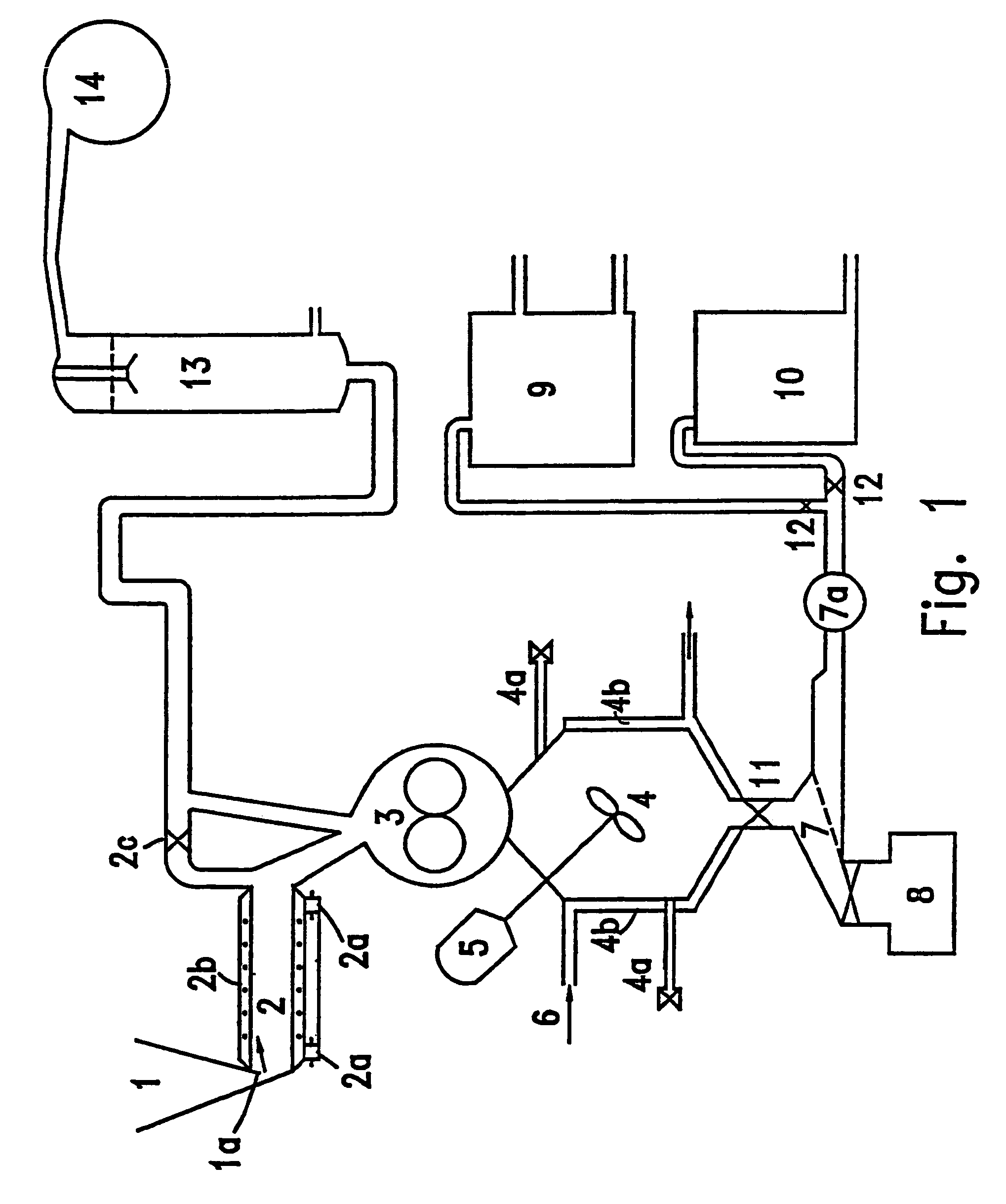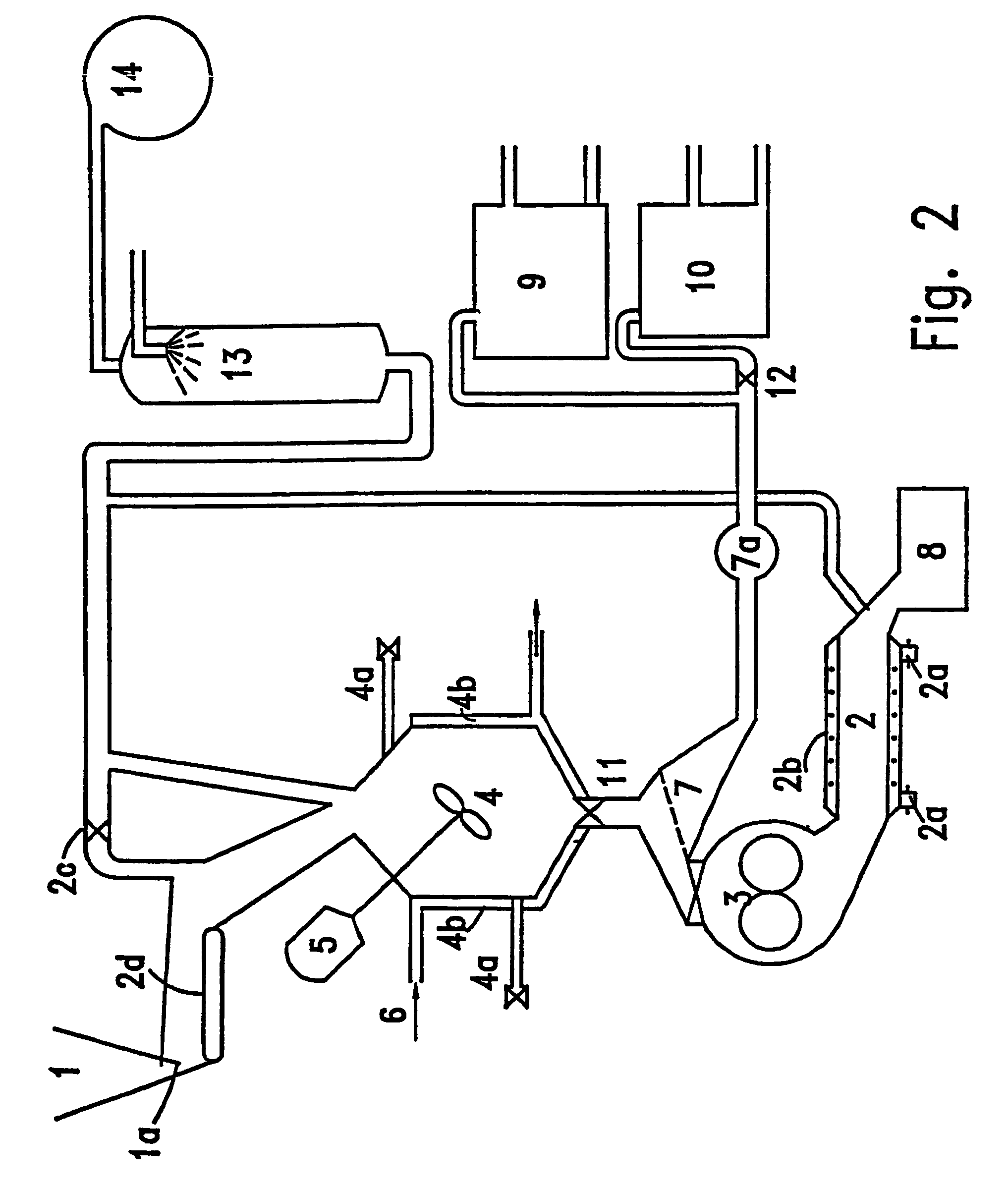High efficiency process for treating mixed metal waste
a technology of mixed metal waste and high efficiency, applied in the field of treatment of mixed metal waste, can solve the problems of large amount environmental and economic problems, and high cost, and achieve the effects of reducing the number of waste materials deposited in landfill sites, reducing the number of waste materials, and improving the quality of metal was
- Summary
- Abstract
- Description
- Claims
- Application Information
AI Technical Summary
Benefits of technology
Problems solved by technology
Method used
Image
Examples
example 1
[0048]A single lithium ‘D’ battery weighing 85 grams, containing 4 g lithium, was placed in 300 mL of a 20% (w / w) solution of aqueous HCl for a period of 90 minutes. The reaction, as evidenced by the appearance of bubbling, began after 7 minutes. The temperature of the solution increased from an initial 21° C. (ambient temperature) to 50° C. after 48 minutes. The maximum temperature reached during the course of the reaction was 65° C. The color of the solution started to become yellow after 11 minutes, due to the absorption of oxides of sulfur by the solution. No explosive events were recorded. Following the reaction, the solution was filtered, and the filtrate was found to contain 3.3 g of lithium. The lithium was recovered from the reaction solution as follows:
[0049]Sodium hydroxide was added to the halide solution until a pH of 4–5 was reached, in order to permit precipitation of the hydroxides of most of the metals with the exception of lithium. This mixture was then filtered in...
PUM
| Property | Measurement | Unit |
|---|---|---|
| wt % | aaaaa | aaaaa |
| temperature | aaaaa | aaaaa |
| temperature | aaaaa | aaaaa |
Abstract
Description
Claims
Application Information
 Login to View More
Login to View More - R&D
- Intellectual Property
- Life Sciences
- Materials
- Tech Scout
- Unparalleled Data Quality
- Higher Quality Content
- 60% Fewer Hallucinations
Browse by: Latest US Patents, China's latest patents, Technical Efficacy Thesaurus, Application Domain, Technology Topic, Popular Technical Reports.
© 2025 PatSnap. All rights reserved.Legal|Privacy policy|Modern Slavery Act Transparency Statement|Sitemap|About US| Contact US: help@patsnap.com



